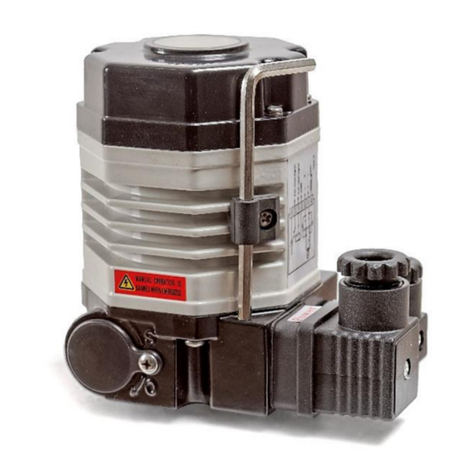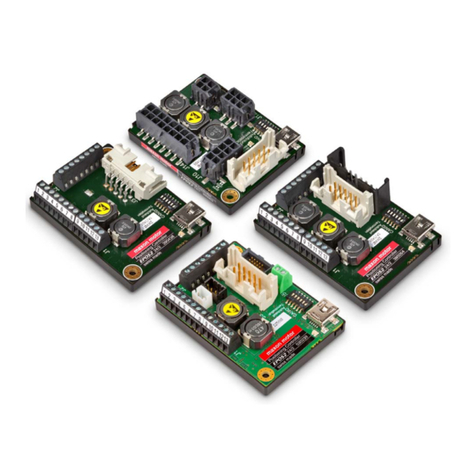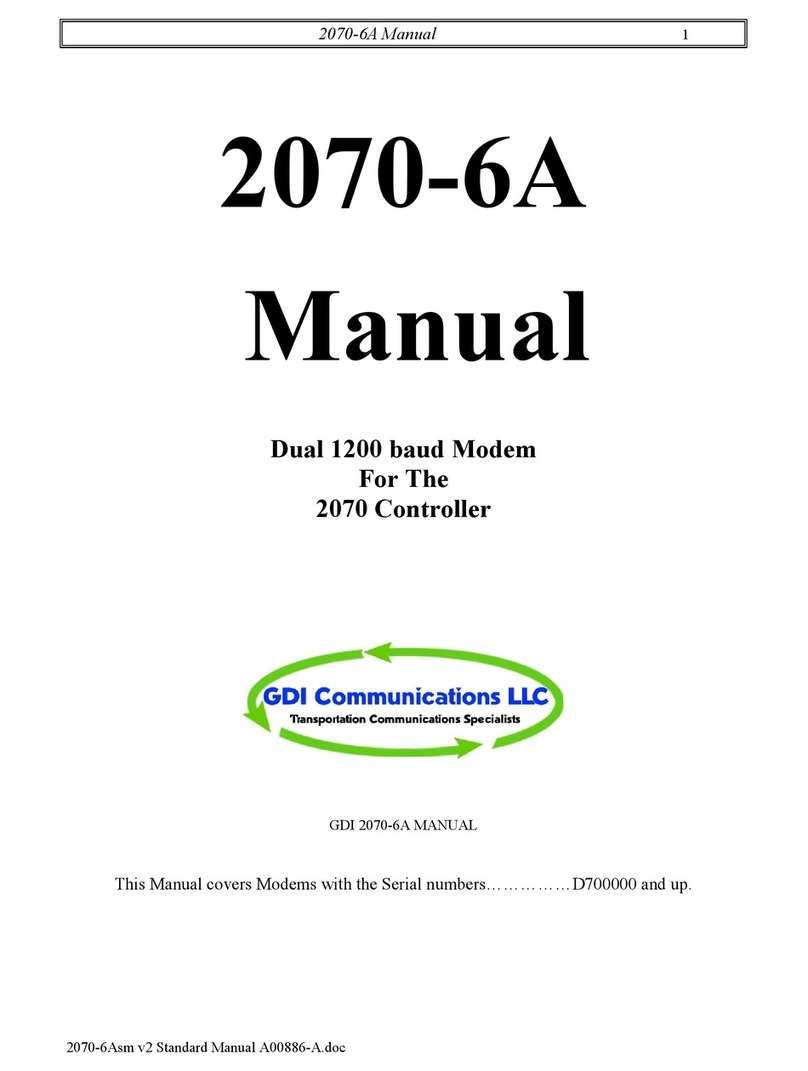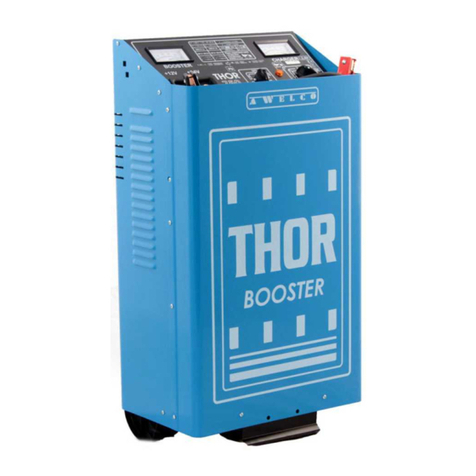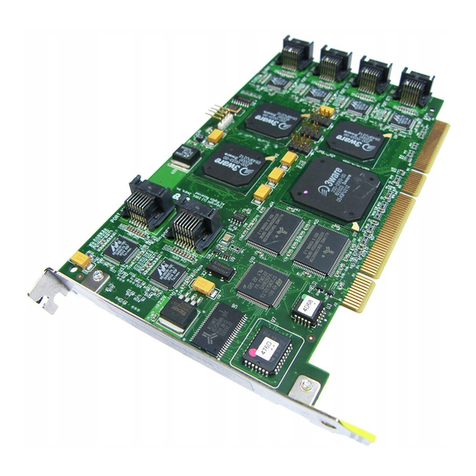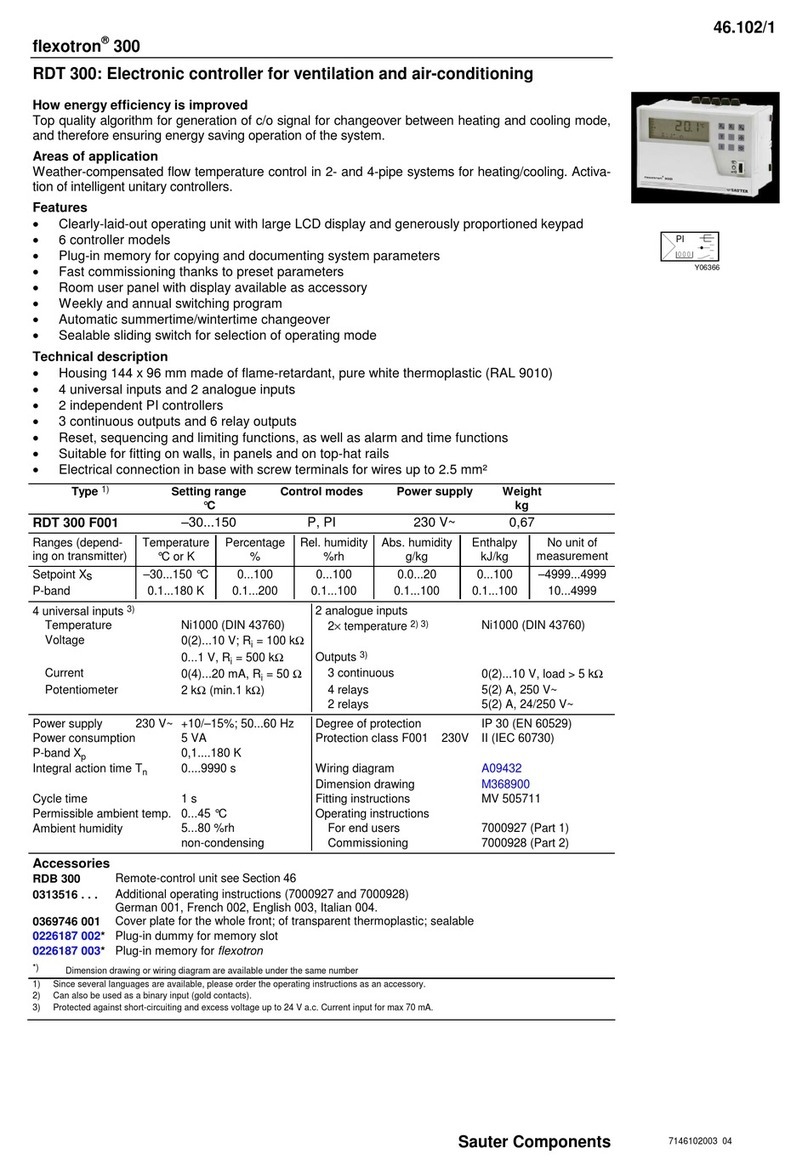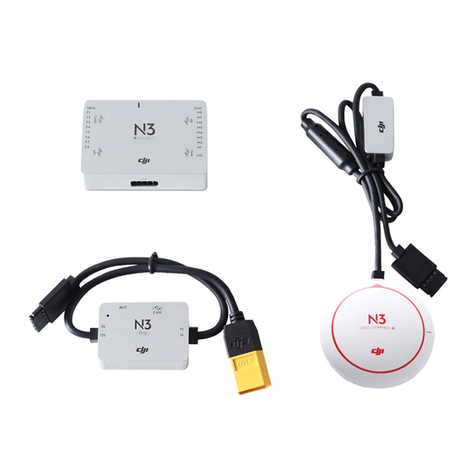PRINCO L2000 User manual

Instrumentation designed
with the user in mind
INSTRUCTION MANUAL
PRINCO MODEL L2000
POINT LEVEL CONTROLLER
with NULL-KOTE™
PRINCO INSTRUMENTS INC.
1020 INDUSTRIAL BLVD.
SOUTHAMPTON, PA 18966
TEL: 800-221-9237, 215-355-1500
FAX: 215-355-7766
WEB SITE: www.princoinstruments.com
E-MAIL: [email protected]
Rev 1, 12 Nov 01

Table of Contents
i
Section 1. Description
A. General Description 1-1
B. Functional Description 1-1
C. L840 Series Probe Description 1-3
Section 2. Specifications
A. 1. L2000 Level Controller 2-1
A. 2. L840 Series Probes 2-1
Section 3. Installation
A. Inspection 3-1
B. Grounding 3-1
C. Probe Mounting 3-1
D. Electrical Connections 3-3
E. Installation in Hazardous Areas 3-5
Section 4. Adjustments and Operation
A. Initial Checkout 4-1
B. Calibration 4-1
C. Alarm Action 4-5
D. Delay Operations and Adjustments 4-5
E. Troubleshooting Guide4-5
Section 5. Equipment Service 5-1
Illustrations
Figure 1-1. Typical Explosion-Proof Installation 1-3
Figure 1-2. Standard L843 Probe, Dimensional Drawing 1-4
Figure 1-3. Standard L843 Probe, Descriptive Drawing 1-5
Figure 3-1. Standard Installation 3-2
Figure 3-2. Extended Guard Installation 3-3
Figure 3-3. Electrical Connections, 115 Vac and 230 Vac Units 3-4
Figure 3-4. Electrical Connections, 24 Vdc Unit 3-4
Figure 3-5. Ground Continuity Test 3-5
Figure 4-1. L2000 Adjustment and Indicator Locations 4-1
Figure 4-2. Conductive Process Calibration Procedure 4-3
Figure 4-3. Non-Conductive Process Calibration Procedure 4-4

Section One
Description
1-1
A. General Description
The Princo Model L2000 is a low-cost, adjustable, RF Impedance point level controller. It may
be used, in conjunction with any Princo L840 Series Sensor Probe, to detect the presence or
absence of process material within a storage vessel.
The basic instrument consists of an electronic chassis within a heavy-duty, cast aluminum,
weatherproof, explosion-proof housing. The housing has a removable lid which exposes the
electronic chassis. The chassis is composed of two circular printed circuit boards which are held
together by a removable system of mechanical spacers and electrical interconnects. The
chassis is easily removed from the instrument housing, allowing convenient replacement,
should troubleshooting be required.
The housing, with internal electronic chassis, attaches directly to any one of the Princo L840
Series point level probes. An electrical and mechanical probe connection is made by simply
screwing the housing directly onto the probe upper hub NPT fitting. The probe lower hub NPT
fitting threads directly into the storage vessel, thus allowing probe entry into the vessel, as well
as, mechanically and electrically fixturing the electronic housing and probe to the vessel
construction.
The electronic chassis performs the RF impedance measurement, and compares the
measurement with a set-point established by the coarse and fine sensitivity adjustments on the
top of the chassis. The set-point adjustment is established by making adjustments with actual
presence and absence of process material in the storage vessel. When the vessel's condition
changes relative to the set-point, two control relays are switched and the Probe Status LED
changes state.
B. Functional Description
The basic function of the device is to detect the presence or absence of process material within
a storage tank or holding vessel, and to announce the process material detection in the form of
an “alarmed” set of relay contacts.
The Model L2000, used in conjunction with an L840 Series Sensor Probe, can detect the
presence or absence of a wide variety of process materials, from electrical insulators with low
dielectric constants, to highly conductive electrical conductors. The mechanical nature of these
materials can range from dry powders or granulars, to liquid materials with virtually any
consistency -even thick, viscous materials that severely coat the sensor probe.
1. Basic Features
•RF Impedance Sensing Measurement Technology with Null-KoteTM
The L2000 uses RF impedance technology proven in tens of thousands of applications. The
principle of operation is very simple: an L840 Series Sensor Probe is mounted in the storage
vessel. As the process material changes from not contacting the probe to contacting the
probe, a corresponding change in electrical impedance occurs between the probe and the
metal storage vessel wall. (For non-metallic storage vessels, a "dual element" probe is
used. In this case, the impedance change occurs between the "active" and "ground"
elements of the probe.)
The highly sensitive impedance measurement circuits inside the L2000 detect and measure
this impedance change by means of a low level, radio frequency current that flows from the

Section One
Description
1-2
sensor, through the process material and back to the electronics via the metal storage
vessel wall (or via the probe ground element). This change in radio frequency current is
converted to a proportional DC signal. The electronics compares this DC signal to a set-
point determined by the coarse and fine sensitivity adjustments, and triggers a change in the
state of the Probe Status LED and the Output Control Relay when the signal level traverses
the set-point level.
•Coating Cancellation
A coating of process material on a probe can effectively simulate a presence condition, even
when the process level is well below the probe. Princo point level probes incorporate a
"guard" element which negates this problem. Driven by the electronic circuitry, the guard
produces a correction signal, allowing the electronics to respond only to level changes
above and below the "active" element of the probe. The unit must be calibrated with the
probe coated for the guard to function correctly.
•Heavy Duty Control Relay
Two sets of Form C (DPDT) contacts are provided via a terminal block located on the top
printed circuit board of the L2000. The contacts are rated at 10 amps at 115 Vac.
•Probe Status Indicator
The status of the process material at the sensor probe is indicated by the color of the
PROBE STATUS LED. The two color (Red/Green) LED is located on the top printed circuit
board of the L2000. Green indicates material contacting the probe; Red indicates no
contact.
•Coarse and Fine Sensitivity Adjustments
Two linearly scaled, single turn potentiometers (SENS, C & F) are provided on the top
printed circuit board of the L2000. These adjustments are used to establish a repeatable
switch point that is calibrated to the given application.
•Selectable Alarm Action
A jumper select switch is provided for programming the alarm action as either high acting, or
low acting. The Alarm Select (FAIL SAFE) is located on the top printed circuit board of the
L2000.
A high acting alarm condition occurs when the process material contacts the probe
(presence). A low acting alarm condition occurs when the process material is removed from
the probe (absence). In both cases the alarm condition is defined as a de-energized control
relay.
•Fail Safe Alarm Action
The L2000 is in normal, non-alarmed state when its control relay is energized. If the unit
were to lose power, the control relay would de-energize. Thus a power failure would
produce an alarm condition, alerting the operator that a problem exists.
•Time Delay Adjustment
The L2000 senses the process material level change instantaneously. However, a delay
can be inserted between the instant the instrument senses the level change, and the time
the control relay correspondingly changes state. A single turn Time Delay (DLY) pot is

Section One
Description
1-3
provided on the top printed circuit board of the unit. This potentiometer allows an adjustment
of 0 to 30 seconds of time delay.
The time delay feature is useful when process material wave action causes the control relay
to continually change state. It can also be used to suit a particular control timing application.
Note that the PROBE STATUS LED changes immediately, even when a delay is applied.
Figure 1-1
Typical Explosion-Proof Installation with L2000 Dimensions
C. L840 Series Probe Description
L840 Series Sensor Probes are the probes commonly used with the L2000. (Refer to Figure 1-
2 for a dimensional drawing of the standard L843 Probe.) These probes have three stainless
steel electrical contacts -active, guard and ground -which are separated from each other by
Teflon insulators. See Figure 1-3 for location of these contacts on the L843 probes. Electrical
contact between the probe elements and the electronic unit is made by simply threading the
probe into the electronic housing. The "active" element contacts the L2000 circuit board by
means of the spring-loaded pin projecting from the top of the probe. The guard contact is made
by means of a ½ inch diameter spring which projects from the bottom of the L2000 bottom
circuit board. This spring fits concentrically around the spring-loaded pin and touches the guard
contact on the probe. The hub of the probe serves as the ground element. It contacts both the
electronic housing and the metal storage vessel through its threaded connections with them.
The guard element cancels the effect of any process coating between the ground and active
elements, allowing the electronics to respond only to changes in the process material level.
All of the L840 Series Probes have these same three elements, varying only in physical
dimensions and configuration as required for various applications.
The L844 Probe (not shown) has a built-in ground reference and is referred to as a "dual
element" probe. It is suitable for low viscosity liquids in various low dielectric and non-metallic

Section One
Description
1-4
tank applications. The L844 has a ¾ inch diameter stainless steel tube concentrically
surrounding the standard active/guard rod. The tube itself serves as the ground element.
Probes are available in custom guard lengths and overall lengths, above and below the
standard lengths. Teflon and Kynar sheathed probes are available for applications where
stainless steel is incompatible with the process material. Consult the factory for specific
application questions.
Figure 1-2
Standard L843 Probe, Dimensional Drawing
Figure 1-3
Standard L843 Probe, Descriptive Drawing

Section Two
Specifications
2-1
A. Specifications
1. L2000 LEVEL CONTROLLER
•TYPE
Point type (on/off), solid state electronic, high frequency (RF), impedance sensing, level
controller.
•POWER REQUIREMENTS
95 to 135 Vac, 50 to 60Hz, 1.3 watts; or 205 to 250 Vac, 1.3 watts; or 17/34 Vdc, <1 Watt.
•AMBIENT TEMPERATURE RANGE
-40 to 150 °F (-40 to 66 °C)
•SENSITIVITY
Senses capacitance as low as 0.5pF and materials with dielectric constants as low as 1.5.
Sensitivity may be decreased to approximately 500pF.
•TEMPERATURE STABILITY
Temperature coefficient of 0.025pf/°F (4.75 pf over ambient temperature range).
•ALARM TYPE
Selectable as either High Acting or Low Acting.
High Acting: Alarm occurs upon presence of process material.
Low Acting: Alarm occurs upon absence of process material.
•ALARM ACTION
Fail Safe Alarm: Control relay de-energizes (drops out) upon alarm.
•CONTROL RELAY CONTACTS
Two sets of form C contacts, rated at 10 amperes, 115 Vac or 26 Vdc, resistive load.
•DELAY TIME AND MODE
Standard delay time is adjustable from 0 to 30 seconds. Standard mode is delay both ways
(turn-on alarm and turn-off alarm). Consult factory for optional times and modes.
•ELECTRONIC HOUSING
Heavy duty, cast aluminum.
Explosion-proof for: Class I, groups C & D; Class II, groups E, F & G.
Weather proof: NEMA 4.
2. L840 SERIES PROBES
•TYPE
Point level, single or dual element.

Section Two
Specifications
2-2
•PRESSURE / TEMPERATURE RATINGS
PSI @TEMP °F
1000 @-300
1000 @100
450 @300
350 @400
0@500
•WETTED SURFACES
Teflon and 316 Stainless Steel are standard. Probes fully sheathed in Teflon or Kynar are
also available.
•VESSEL CONNECTION SIZE
3/4" NPT.
•PHYSICAL DIMENSIONS
Refer to Figure 1-2.

Section Three
Installation
3-1
A. Inspection
The L2000 Level Controller is normally supplied with one of the Princo L840 Series Level
Probes. The L2000 and probe are shipped in separate packages.
Carefully remove each package's contents and check each item against the packing list. Inspect
each item for shipping damage. In particular, check the spring-loaded pin, located on the
threaded hub end of the probe (see Figure 1-3). This pin provides the necessary electrical
connection from the L2000 bottom printed circuit board, to the active element of the probe.
Make sure this pin is not missing, bent, jammed, or otherwise damaged.
If the probe is Teflon or Kynar sheathed, then carefully inspect the condition of the sheathing.
Make sure the sheathing forms a smooth, continuous coverage over the probe. Discontinuities
in the sheathing material which breach through to the active element may render the probe
useless in certain applications. Report any such damage immediately to the factory.
CAUTION !
Care must be exercised when handling probes which incorporate an insulating sheath. Do not
allow the sheathed sensing element to come in contact with a rough or sharp surface, as this
may cause a breach in the insulating sheath, and render the probe inoperable.
B. Grounding
Reliable operation of the L2000 Level Controller will only occur through proper installation. The
most important installation consideration is a proper sensor ground return.
If the process storage tank is metal, and the probe is a single element type, the ground return
connection is made when the probe is properly mounted in the vessel (see C. Probe Mounting).
Dual-element probes are available for non-metallic tanks. They provide a built-in ground return
rod. In this case, external grounding is not required.
If the vessel is non-metallic (eg. plastic, concrete, etc.), and the probe is a single element type,
a separate ground return should be provided. The ground return should consist of a metal rod,
equal in length to the probe. The rod should be mounted parallel to the length of the probe, no
greater than 6 to 8 inches from it.
The ground return rod must be electrically connected to the L2000 housing or to the ground
position of the terminal block with 18 AWG or heavier wire. See Figure 3-3 & 3-4. See Figure
3-5 for ground continuity testing.
C. Probe Mounting
The probe is mounted by its NPT hub or flange. Refer to Figure 1-1 for dimensions.
If the process material in the storage vessel is electrically conductive, the probe can be mounted
in either a vertical or horizontal orientation. If the probe is mounted vertically, and the process
material is electrically conductive, the L2000 will be tip sensitive (i.e. the L2000 trip point will
occur when the process material just contacts the tip of the probe).
If the process material in the storage vessel is electrically non-conductive (i.e. non-conductive
liquid, dry powder or granular), it is recommended that the probe be mounted in a horizontal
orientation.

Section Three
Installation
3-2
A vertically installed probe in a non-conductive process material, may require up to six inches of
probe immersion before a stable trip point is reached.
In horizontal mount applications, it is recommended that the probe be mounted at a shallow
downward angle (not critical) off the horizontal axis for optimum process liquid drainage (refer to
Figure 3-1).
In applications where the probe is installed through a nozzle, the guard element should extend
two inches into the vessel, beyond any process material coating build-up on the vessel inner
wall (see Figure 3-2).
To mount the equipment, screw the NPT hub of the probe into the NPT mounting collar which is
welded into the wall or top of the storage vessel.
After mounting the probe, screw the electronic housing onto the terminal end of the probe. This
is all the support it requires.
NOTE
Do not use any type of thread lubricant on the NPT probe mounting threads or the NPT threads
which mount the electronic housing. Application of thread lubricant may cause faulty or improper
ground connection. If required, Teflon tape may be used as a thread seal for either threaded
connection. If Teflon tape thread sealant is used, the installer should make an electrical
continuity check with a hand held ohm meter. Continuity should exist between the storage
vessel and the equipment electronic housing. Less than 1 ohm resistance should exist between
these two points. Refer to Figure 3-5.
Figure 3-1
Standard Installation

Section Three
Installation
3-3
Figure 3-2
Extended Guard Installation
D. Electrical Connections
Remove the lid of the L2000 electronic housing in preparation for connection of input and output
wires. Before drawing wires into the equipment housing, it may be necessary to remove the
electronic chassis. To do so, unfasten the two 8-32 mounting screws which are located on either
side of the electronic chassis. Once screws are unfastened, the chassis may be lifted or
removed from the housing. The power and relay contact wires may now be pulled through the
¾ inch NPT wiring port.
Connect the 115 Vac or 230 Vac power line wires: Hot (H), Neutral (N), and Ground (G)
respectively, to the terminal block as shown in Figure 3-3. If the unit requires 24 Vdc for power,
the terminal block is labeled as plus (+), minus (-) and ground (G). Connect 24 Vdc power
accordingly (See Figure 3-4).
Connect the normally open (NO), normally closed (NC) and common (C), relay wires to the
terminal block as shown in Figure 3-3, and Figure 3-4, and as required by the specific circuit
application.
NOTE
The relay contact configuration, as shown on the terminal block labeling and in Figures 3-3 and
3-4, is identified as such with the relay in the de-energized (shelf) state. Fail safe operation
requires relay to be normally in the energized (non-shelf) state. Upon alarm, configured as
either HIGH or LOW, the relay then becomes de-energized (shelf state).
Replace the electronic circuit board chassis with the flat side of the printed circuit boards facing
the wiring port. Replace the 8-32 mounting screws and tighten.

Section Three
Installation
3-4
NOTE
The two 8-32 mounting screws MUST be fastened securely. These two screws provide the
ground connection to the printed circuit board electronics. If not fastened securely, faulty
equipment operation may occur.
Verify that all connections were made correctly.
Figure 3-3
Electrical Connections, 115 Vac and 230 Vac Units
Figure 3-4
Electrical Connections, 24Vdc Unit

Section Three
Installation
3-5
E. Installation in Hazardous Areas
The outline which follows points out some of the major requirements of the NEC's (National
Electric Code) Section 501, as it relates to typical level control installations.
WARNING !
For applications which MUST BE explosion-proof and/or weatherproof, it is the customer's
responsibility to install the required conduit, seals, wiring, etc., which meet national, as well as
applicable local and plant safety codes. See Figure 1-1.
For Class 1 locations, rigid metal conduit must be used. At least five full threads of the conduit
must be tightly engaged in the enclosure. Conduit seal fittings must also be used. These seal
fittings, must be filled with an approved sealing compound and must be installed within 18
inches (or closer) of the enclosure. Conduit seals are also required when the conduit passes
from a hazardous area into a non-hazardous area. Water drain seal fittings eliminate or
minimize the effect of water which tends to collect in the conduit or enclosure due to
condensation.
Approved wire type, such as mineral-insulated wire, is required for use in Division 1
installations. Certain types of metal-clad cable or shielded non-metallic sheathed cable are
permitted in Division 2 installations. When multiconductor cables are used in the conduit, the
outer jacket must be cut away in such a manner that allows the sealing compound to surround
each insulated wire as well as the jacket.
The preceding information should act as guide to assist the customer/installer in satisfying their
responsibility for producing safe installations in hazardous area.
Ground Continuity Test:
With unit power off, using an ohmmeter on
the lowest range, a check between the
following points should read less than one
ohm.
1. Point A (posts) to point B.
2. Point B to point C.
3. Point C to point D (except in non-
metallic tank).
Figure 3-5
Ground Continuity Test

Section Four
Adjustments and Operation
4-1
A. Initial Checkout
1. Refer to Figure 4-1 for L2000 adjustment and indicator locations.
2. Install the L2000 Level Controller with Probe as presented in Section 3 of this manual.
3. Apply power to the unit and allow a 15 minute warm-up time before performing the
calibration procedure as outlined below.
4. Perform step H.1: Basic Electronic Checks.
Figure 4-1
L2000 Adjustment and Indicator Locations
B. Calibration
The Coarse (C) and Fine (F) sensitivity (SENS) pots must be properly adjusted in order to
establish a repeatable switch point that is calibrated to the given process material application.
If the process material is electrically conductive, then adjustments can be made under simulated
or "bench test" conditions.
To make adjustments under simulated conditions, perform the following outlined procedure by
raising and lowering the L2000, with attached probe, into and out of a small metallic vessel filled
with the conductive process material. Perform the procedure making certain that nothing but the
process material, contacts the probe. A clip lead must be connected from the L2000 metal
housing to the metal wall of the vessel used.
Whether adjustments are made under simulated conditions, or in the actual proper installation,
the following procedure must be performed.
NOTE
A Green PROBE STATUS indicator denotes presence of material at the probe, and a Red
indicator denotes absence of material at the probe, when sensitivity potentiometers are properly
adjusted.

Section Four
Adjustments and Operation
4-2
1. ADJUSTMENT PROCEDURE -Conductive Process Materials
a) Refer to Figure 4-1 for adjustment and indicator locations. Refer to Figure 4-2 for a pictorial
outline of this procedure.
b) Perform Section 4.A., Initial Checkout, as outlined above.
c) Allow the unit to warm up (thermally stabilize) for approximately 15 minutes before
proceeding with steps d through f below.
d) Turn the Time Delay (DLY) pot to the fully counterclockwise position (No Delay).
e) With process material NOT contacting the probe, adjust both the Coarse (C) and Fine (F)
Sensitivity (SENS) pots fully counter-clockwise. The Probe Status LED should be Red.
f). Immerse probe in process material. The LED should switch to Green and the relays should
change state upon contact with the process material. This completes the adjustment
procedure.
NOTE
Conductive process materials will tend to "trip" near the tip of the probe when the storage tank is
metallic. This same procedure may be used even though the probe is to be mounted
horizontally.
Figure 4-2
Conductive Process Calibration Procedure

Section Four
Adjustments and Operation
4-3
2. ADJUSTMENT PROCEDURE -Non-Conductive (Insulating) Process Materials:
a) Refer to Figure 4-1 for adjustment and indicator locations. Refer to Figure 4-3 for a pictorial
outline of this procedure.
b) Perform Section 4.A., Initial Checkout, as outlined above.
c) Allow the unit to warm up (thermally stabilize) for approximately 15 minutes before
proceeding with following steps.
d) Preset the Fine (F) Sensitivity (SENS) pot full clockwise and the Coarse ( C ) pot to its mid-
point position (12 o'clock).
e) Turn the Time Delay (DLY) pot to the fully counter-clockwise position (No Delay).
f) If a coating is likely to build up on the probe in actual use, pre-coat the probe with the
process material before proceeding. The coating must cover the entire length of the probe,
including the guard element. This may be done by raising the level or by other means.
g) With process material NOT contacting the probe, adjust the Coarse (C) sensitivity such that
the Probe Status LED "just turns" Green and stays. Don't touch the Coarse (C) sensitivity
pot again.
NOTE
Clockwise rotation increases sensitivity for both Coarse (C) and Fine (F) potentiometers.
h). Adjust the Fine (F) sensitivity pot counter-clockwise, such that the PROBE STATUS LED
"just turns" Red, and then back clockwise until it "just turns" Green. Mark the position of the
Fine (F) sensitivity pot.
i). Immerse probe in process material to the desired level of "trip point". For a vertically
installed sensor probe in a non-conductive process material, this trip point should typically
be half way up the probe active section.
NOTE
Horizontal probe mounting is preferred (see Section 3C). The procedure must be done with the
L2000 properly installed in the intended storage tank, and with the intended process material.
All or most of the probe may need to be covered. The angle between the adjustment marks may
be quite small with non-conductive process materials.
j). With probe immersed, adjust the Fine (F) sensitivity pot counter-clockwise, such that the
PROBE STATUS LED "just turns" Red and stays. Mark or mentally note position of
screwdriver slot.
k). Turn the Fine (F) sensitivity pot until the screwdriver slot is midway between the marks from
steps h and j. The Probe Status LED should now be Green (probe immersed in same
position). If not repeat steps d through k.

Section Four
Adjustments and Operation
4-4
Figure 4-3
Non-conductive Process Calibration Procedure

Section Four
Adjustments and Operation
4-5
C. Alarm Action
The L2000 is in the normal “non-alarmed” state when it’s control relay is energized. The unit is
in the “alarm” state when its internal control relay is de-energized. Hence, if the unit lost power,
the internal control relay would de-energize, and an “alarm” condition would occur.
This type of “Fail-Safe” operation is based on the fact that most major malfunctions, including a
power failure, would cause the control relay to de-energize.
1. Fail Safe Low Operation (Low Acting Alarm):
The control relay contacts de-energize (shelf state) upon Low Alarm. When process material
absence is detected, a Low Alarm condition occurs, and the relay changes from the normal
"non-alarmed" (energized) state to the “alarmed” (de-energized) state.
2. Fail Safe High Operation (High Acting Alarm):
The control relay contacts de-energize (shelf state) upon High Alarm. When process
material presence is detected, a High Alarm condition occurs, and the relay changes from
the normal "non-alarmed" (energized) state to the “alarmed” (de-energized) state.
This action is controlled by a small plastic jumper selector switch (FAIL SAFE) located on the
top of the unit (see Figure 4-1). The L circuit pad designates Low Acting Alarm. The H circuit
pad designates High Acting Alarm. The center pad is the common, and always connects to one
position of the jumper selector.
Unless otherwise specified this unit is set for High Acting Alarm operation. If Low Acting Alarm
operation is desired, remove the jumper switch currently connected between center pin and H,
and re-locate it between center pin and L.
D. Delay Operations and Adjustments
Time delay is useful in preventing control relay "chatter" caused by agitation of the process
material within the storage vessel. It is also useful in certain process control timing applications.
The three types of time delay are as follows: delayed turn-on alarm, delayed turn-off alarm, and
delayed turn-on alarm/turn-off alarm.
The first two modes are normally used to suit a particular timing application. The third mode
(turn-on/turn-off) is best suited to prevent relay chatter. This mode (on/off) is factory configured
in the standard L2000 unit.
A single turn Time Delay (DLY) pot is provided on the L2000 (see Figure 4-1). Most applications
require no time delay. Therefore, adjust the Time Delay pot to the maximum counterclockwise
direction (zero time delay).
If there is significant agitation of the process material within the storage vessel, then time delay
may be required. In this case, adjust the Time Delay pot clockwise, just enough to prevent
control relay chatter. Use the smallest amount of delay possible.
The maximum standard delay time is 30 seconds full scale. Consult Factory for optional delay
times and modes.
H. Trouble-Shooting Guide
1. Basic Electronic Checks

Section Four
Adjustments and Operation
4-6
üThe Probe Status LED should be lit to either Red or Green at all times. If not, check that
proper power is applied to the Power terminals.
üWith the Probe dry (no contact with process material):
With both the Coarse (C) and Fine (F) sensitivity potentiometers turned fully clockwise, the
LED should be Green. With both potentiometers turned fully counter-clockwise the LED
should be Red. (With the Probe immersed in a conductive liquid, the LED should remain
Green at all times.)
üThe LED should switch crisply from Green to Red or from Red to Green. It should never
hang in between in an orange color.
If the unit fails any of the above checks, return the L2000 electronic chassis to the factory for
repair or replacement.
2. Adjustment Problems
•After performing the adjustment procedure, the unit fails to shut off or on properly.
üCheck ground continuity (refer to Figure 3-5).
üCheck that the spring-loaded pin (refer to Figure 1-3) on the top of the probe is making
contact with the silver pad on the bottom of the electronic circuit board. The pin normally
projects about 1¼ inch above the NPT fitting on the probe. It may be stretched out further
with a pair of pliers without causing damage.
üBe sure that non-immersed and immersed conditions really exist when making the
appropriate adjustments
•Unit switches correctly once or several times and then fails to switch correctly.
üA progressively thicker coating may be building up on the probe. This would result in a
narrower span between the non-immersed and immersed positions of the sensitivity
potentiometer when performing the adjustment procedure.
Solution: This condition will require performing the adjustment procedure over again when
the coating is at its thickest point.
üThere may have been a change in the dielectric constant of the process material. This
would change the flow of RF current through the probe, effectively shifting the switch point.
Solution: RF impedance technology is designed to operate with materials having a constant
dielectric constant (therefore, a constant RF conductivity). It may be possible, through trial
and error, to find a switch point that works for some changes in dielectric constant; but
extreme changes, like oil to water, may be impossible to compensate for. As a general rule,
a unit adjusted to a low dielectric constant material will switch correctly when a higher
dielectric constant material is applied (although at a point closer to the tip of the Probe).
However, changes in the coating characteristics could negate this.

Section Five
Equipment Service
5-1
Getting Help
If your Princo equipment is not functioning properly, and attempts to solve the problem have
failed, contact the closest Princo sales representative in your area, or call the factory direct and
ask for service assistance. The factory telephone number is 1-800-221-9237.
To assist us in providing an efficient solution to the particular problem, please have the following
information available when you call:
1. Instrument Model Number
2. Probe Model Number
3. Purchase Order Number
4. Date of Purchase Order
5. Process Material being Measured
6. Detailed Description of the Problem
If your equipment problem cannot be resolved "over the phone"; then it may be necessary to
return the equipment for checkout/repair.
Do not return equipment without first contacting the factory for a Return Authorization Number
(RMA #).
Any equipment, which is returned, MUST include the following information in addition to the list
above.
7. RMA Number
8. Person to contact at your Company
9. Return (Ship to) Address
Princo level instruments are covered by a 10-year limited warranty. You will not be charged if it
is determined that the problem is covered under warranty. Please return your equipment with
freight charges prepaid. If repair is covered under warranty, Princo will pay return freight
charges.
If telephone assistance or equipment return is not a practical solution to the problem, then it
may be necessary for field assistance. Trained field servicemen are available from the factory
on a time/expense basis to assist in these instances.
Table of contents
Popular Controllers manuals by other brands
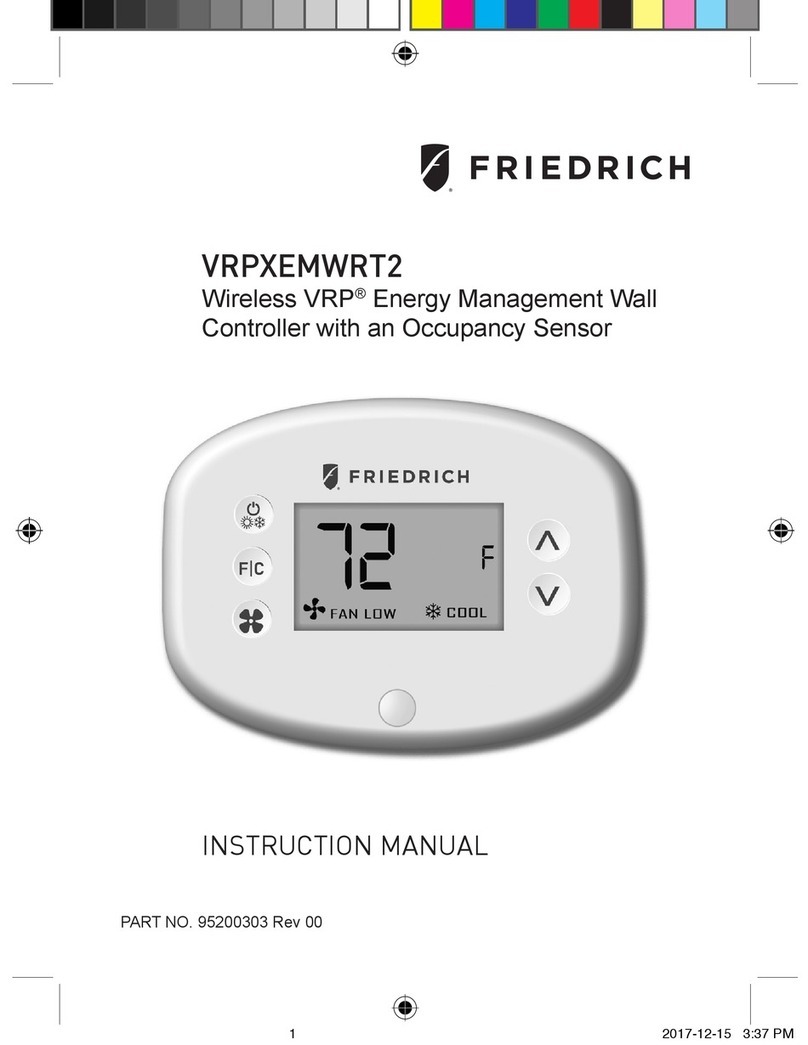
Friedrich
Friedrich VRPXEMWRT2 instruction manual
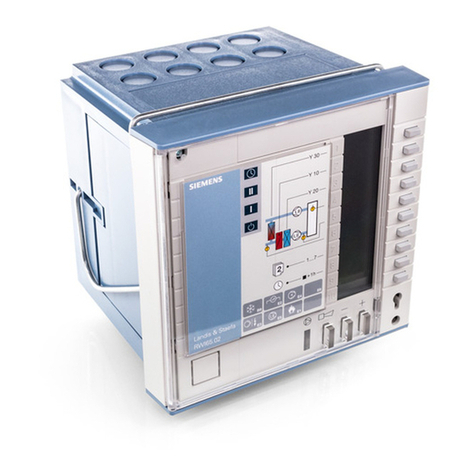
Siemens
Siemens AEROGYR RWI65.02 manual
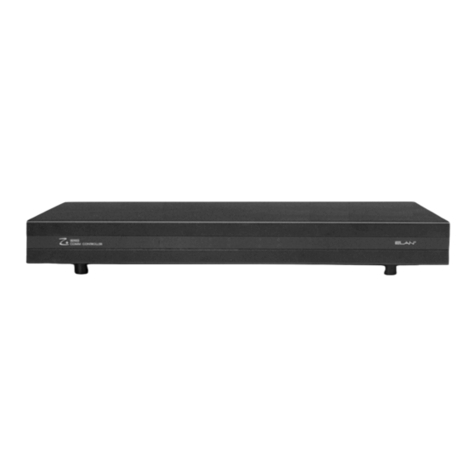
Elan
Elan Z-600 owner's manual
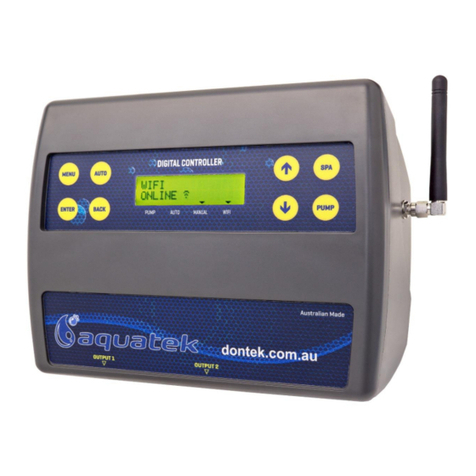
Dontek
Dontek AQUATEK instruction manual
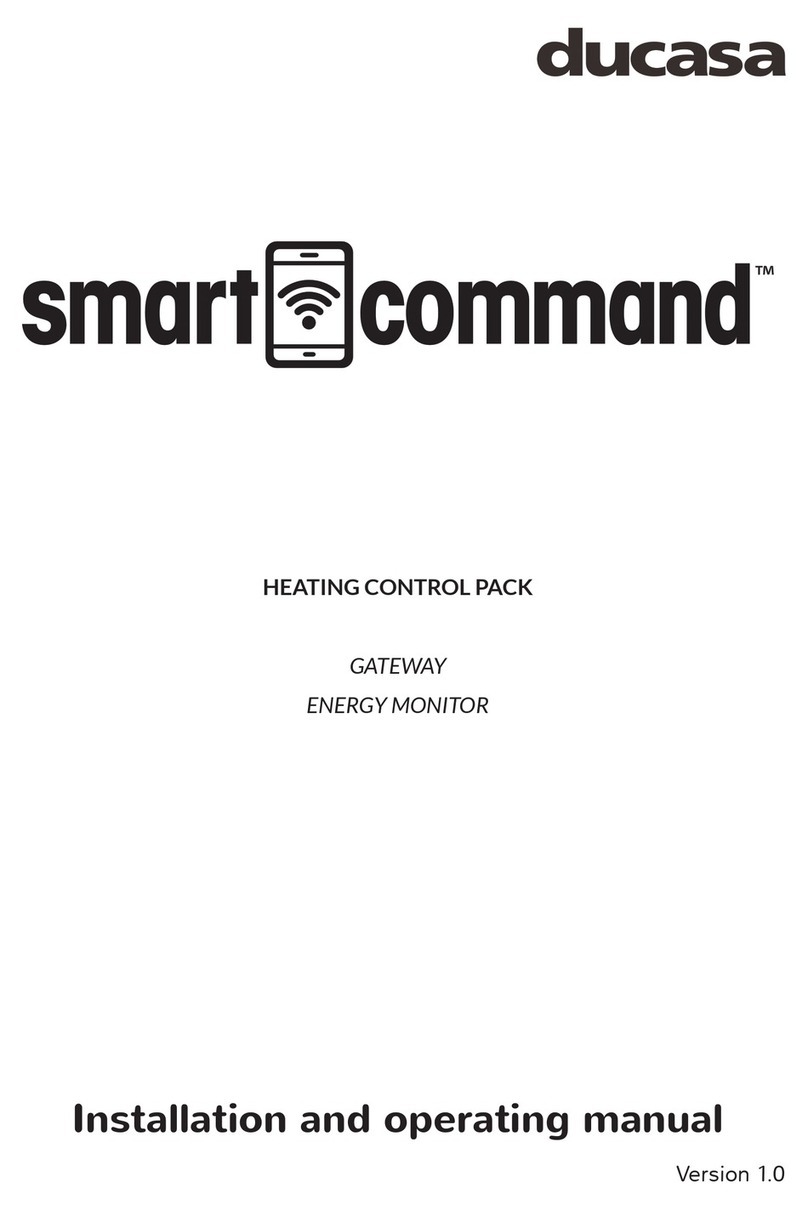
Ducasa
Ducasa Smart Command Installation and operating manual

Yisutongma Network Technology
Yisutongma Network Technology ESM-9013 instruction manual


